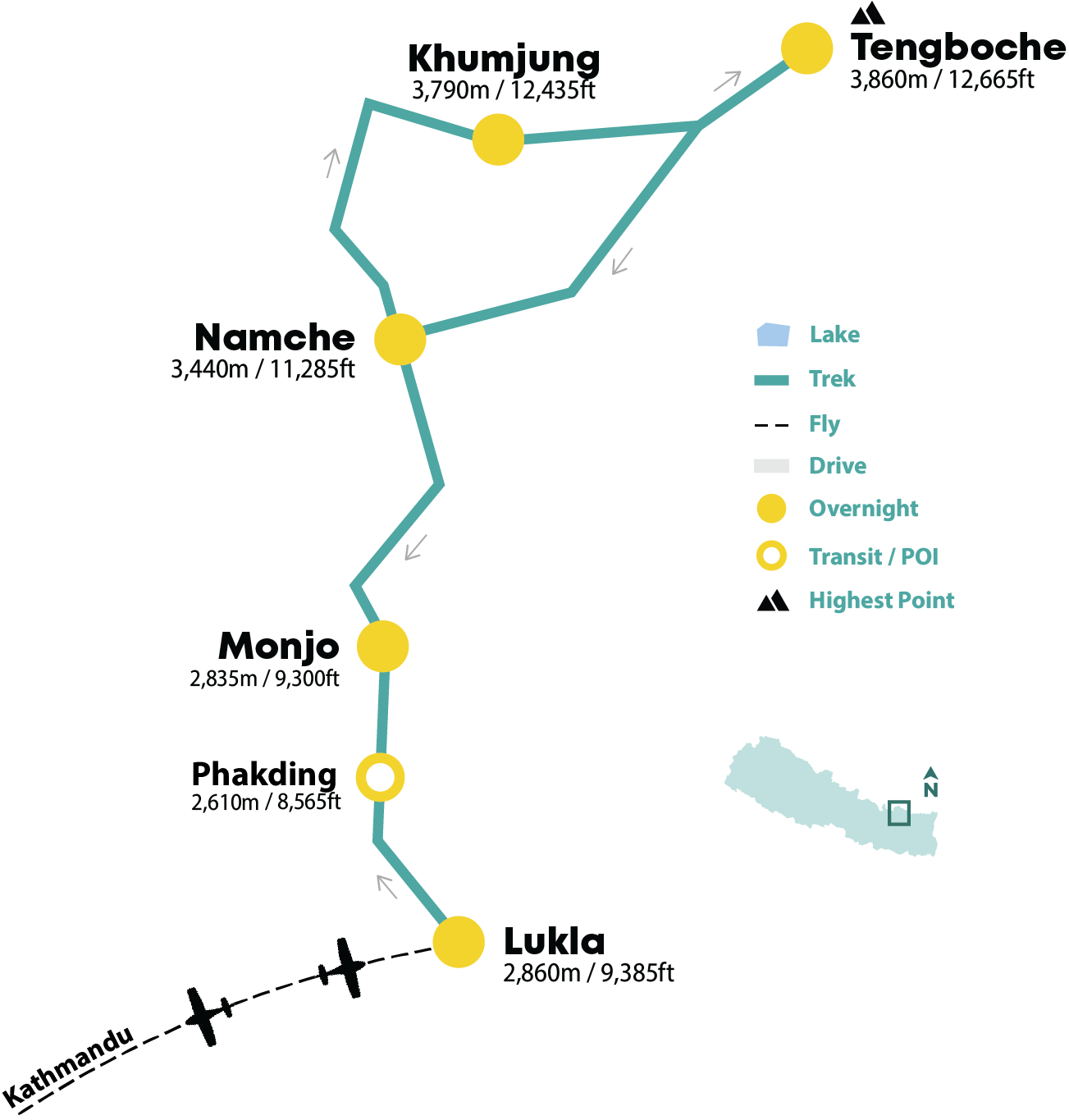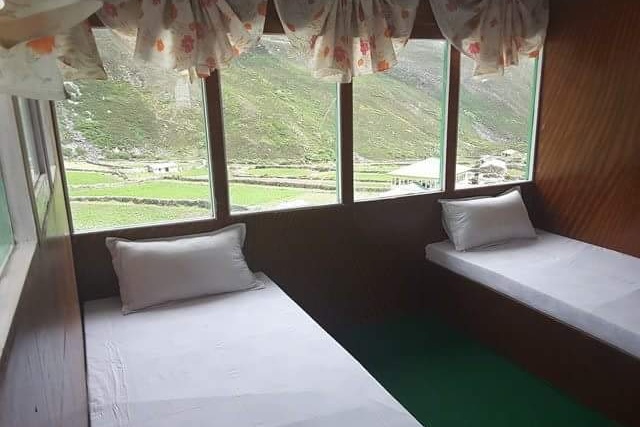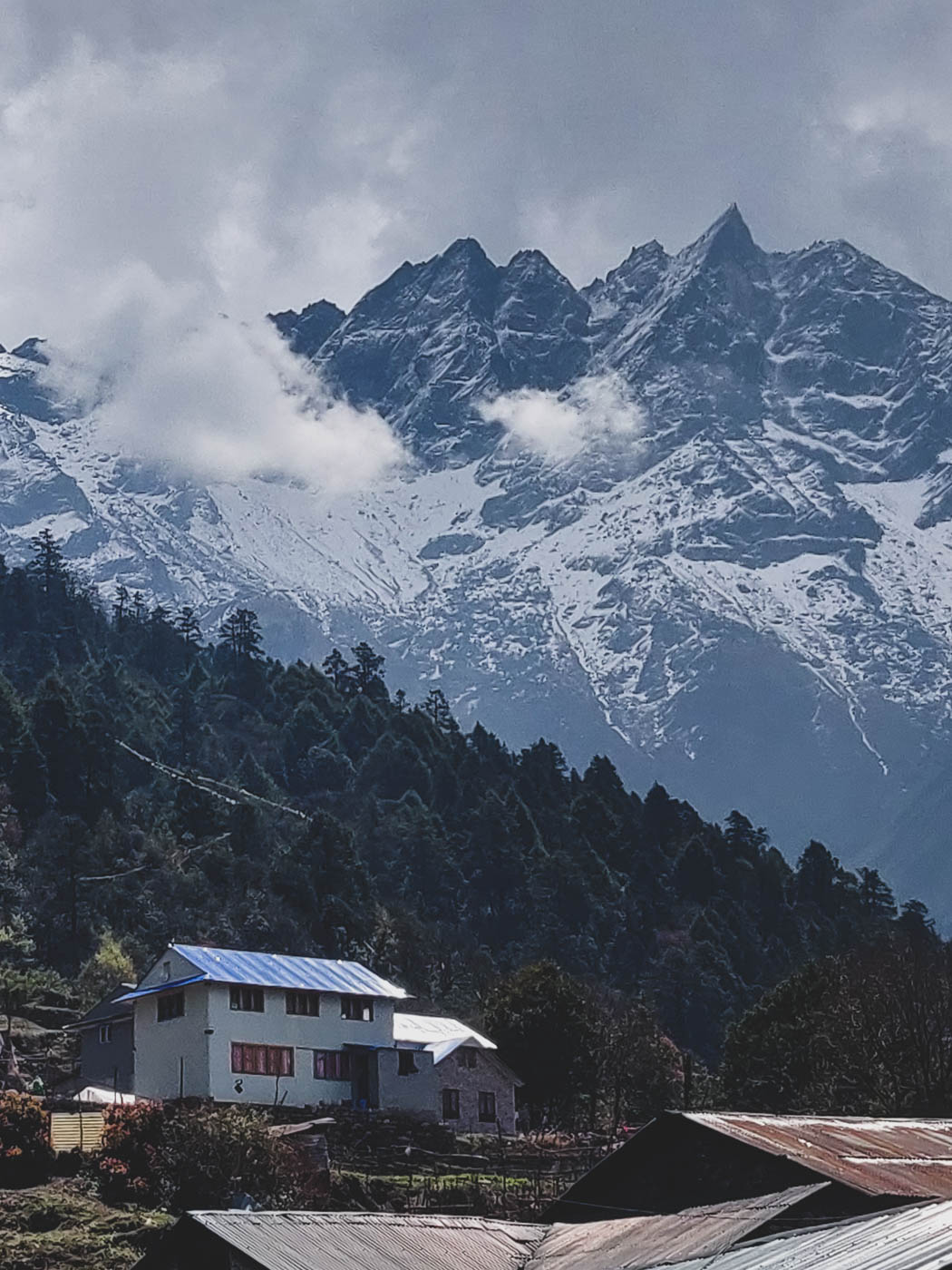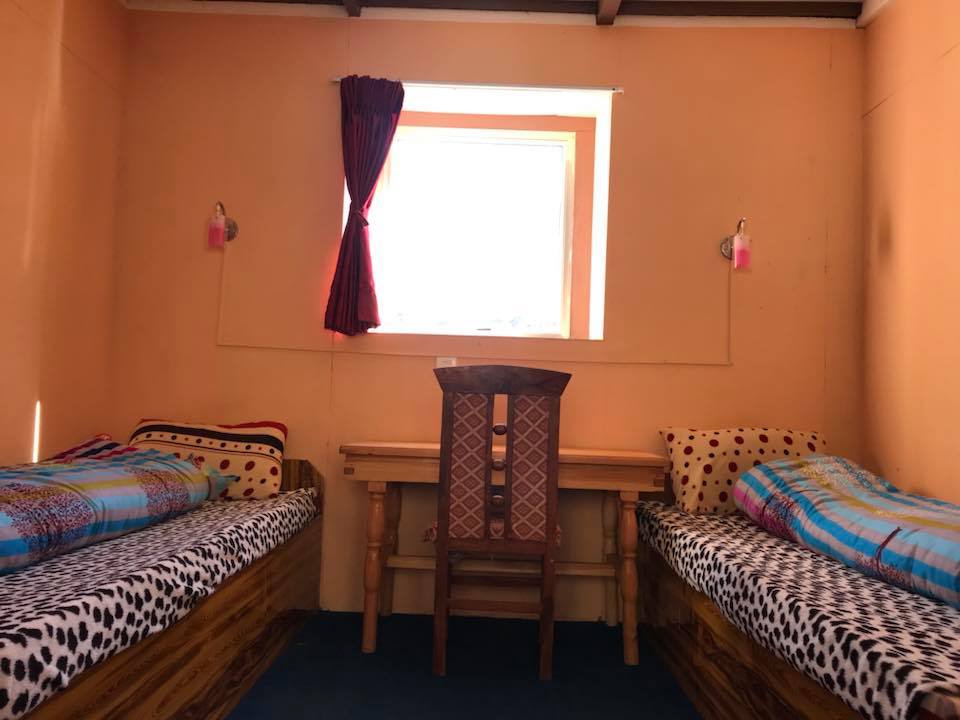|
Mountain Trek / Everest Region / Nepal Everest Tengboche Skyline TrekNext tentative Date: Available as a Private Trek on a date of your preference.
A scenic trek through Sherpa heartland, offering breathtaking views of Everest, cultural encounters in remote villages, and spiritual moments at Tengboche Monastery, all within a moderately challenging Himalayan adventure. |
Overview
The Everest Tengboche Skyline Trek offers a spectacular and diverse journey through the heart of the Khumbu region, showcasing awe-inspiring mountain landscapes and rich Sherpa culture. Beginning with a thrilling flight to Lukla, the trek takes you through lush valleys, crossing suspension bridges over roaring rivers, and passing through traditional Sherpa villages like Monjo and Namche. Along the way, you’ll be greeted by the warm hospitality of the local people, with time to acclimatize in Khumjung, where you can explore the village’s unique culture and stunning mountain views. Wildlife sightings are common, from colorful pheasants and soaring eagles to yaks grazing in alpine meadows. The highlight is Tengboche, where the ancient monastery offers spiritual tranquility, framed by panoramic views of Everest, Ama Dablam, and other Himalayan giants. The trails are both scenic and moderately challenging, making the trek an unforgettable experience of natural beauty, cultural depth, and adventure in Nepal’s most famous region.
Highlights
| Spiritual Tengboche Monastery: Tengboche is home to the largest monastery in the region, where trekkers can experience Buddhist ceremonies against the backdrop of stunning peaks, offering a spiritual and serene break from the physical journey. | |
| Acclimatization in Khumjung: A stop in Khumjung allows for proper acclimatization and exploration of this picturesque Sherpa village, known for its monastery and the famous "Yeti scalp," as well as breathtaking views of the surrounding peaks. | |
| Dramatic Mountain Landscapes: The trek offers breathtaking views of some of the world’s highest peaks, including Everest, Lhotse, and Ama Dablam. The scenic vistas range from lush valleys to towering snow-covered mountains, especially from Namche and Tengboche. | |
| Unique Sherpa Culture: Explore the unique Sherpa culture in villages like Namche and Khumjung, where you can visit local monasteries, learn about Buddhist traditions, and witness how these mountain communities have adapted to life at high altitudes. | |
| Warm Sherpa Hospitality: Throughout the trek, you'll stay in Sherpa-run tea houses, enjoying the warm hospitality of the Sherpa people, known for their friendly demeanor and rich mountain heritage. | |
| Diverse Wildlife: The trail offers opportunities to spot a range of Himalayan wildlife, including the colorful Danphe (Himalayan monal), musk deer, Himalayan tahr, and grazing yaks, especially while trekking through the lush alpine forests. | |
| Scenic and Well-defined Trails: The trail system is well-maintained, with gradual ascents and descents through forested paths, suspension bridges, and highland meadows, offering a moderate yet rewarding trekking experience with ever-changing scenery. |
Our treks are designed to provide you with a comfortable pace and multiple acclimatization stops along the route. If you possess moderate fitness levels and have prior experience in multi-day trekking, the Everest Skyline Trek is the perfect choice for you. It is also suitable for families with small kids.
The trails throughout the trek are wide and well-marked. While the most part is a mix of gradual ups and downs, you’ll experience steep climbs on two days. Daily walking hours usually span between 4 to 7 hours. There are some steep climbs During the trek, you'll only need to carry a day bag, as our dedicated porters will take care of the rest of your belongings. Throughout most of the journey, we stay in standard mountain lodges that offer clean and comfortable accommodations, ensuring you have a pleasant rest at the end of each day.
Best time to go
JanFebMarAprMayJunJulAugSepOctNovDec
JanFebMarAprMayJun
JulAugSepOctNovDec
Spring is the second most popular time to trek in the region, offering gorgeous mountain vistas. The weather is blissful, and the trails are adorned with vibrant rhododendron flowers from mid-March onwards. The skies are sunny, clear, and the days are warm, with an average daytime temperature ranging between 10°C to 20°C (50°F to 68°F). There are chances of occasional downpours and flight cancellations towards the end of May, so make sure to carry rain gear. It is a slightly less busy time of the year compared to fall, but please be prepared for crowded trails and lodges.
Monsoon comes with deep colors of greens and blooming wildflowers in the meadowy patches. The trails will be slippery and have leeches, but trekking in lower Everest during June and September is not bad at all. Hotels are operational. The landscapes with dramatic clouds are simply mesmerizing. Visibility could be compromised, and mountain views are not guaranteed. There’s also a high risk of flight cancellation.
Fall in Nepal blesses you with the clearest blue skies, with mountains gracing their glorious presence on the horizon. No wonder, the season sees the highest number of trekkers, making it the most popular time to trek in Nepal. Trekking in these months is perfect as the days are warm and sunny, and the nights are cold. The average daytime temperatures range between 10°C to 20°C (50°F to 68°F), and it can drop to freezing temperatures at night. With bustling trekkers in full swing, all the lodges are very busy, so advance booking is a must.
Winter in the region is pretty cold, with temperatures dropping close to the freezing point. The average daytime temperature ranges between 5°C to 15°C (41°F to 59°F). Since we will not be going to significantly high elevations, Dec and Jan are good times to do this trek. Winter boasts some dazzling views of the snowcapped mountains and is also a good time for wildlife sightings. Several lodges in the lower Everest will be operational throughout winter.
| Group Sizepax | Fixed Departureprices per person | Regularprices per person |
| 4 - 7 | USD 1215 | |
| 8 & up | USD 1060 |
|
|
|
|
|
Prices valid until Dec 31st, 2025
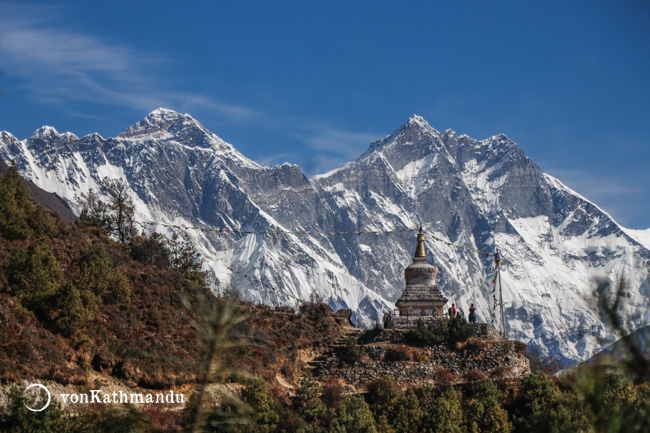
Gorgeous view of Everest and Lhotse seen from the walk from Namche towards Tengboche
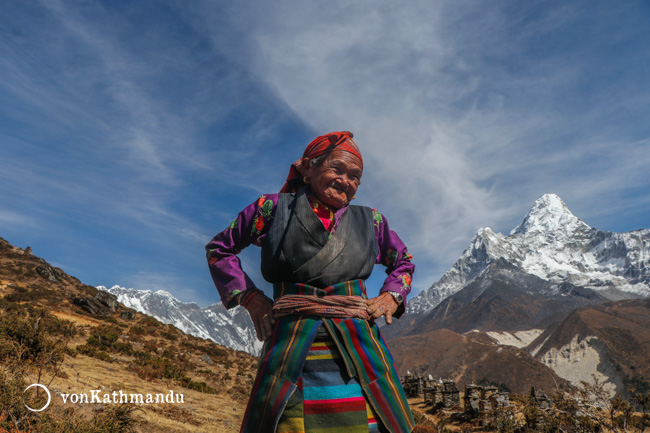
A lady in Pangboche clad in vibrant Sherpa attire called Bakkhu
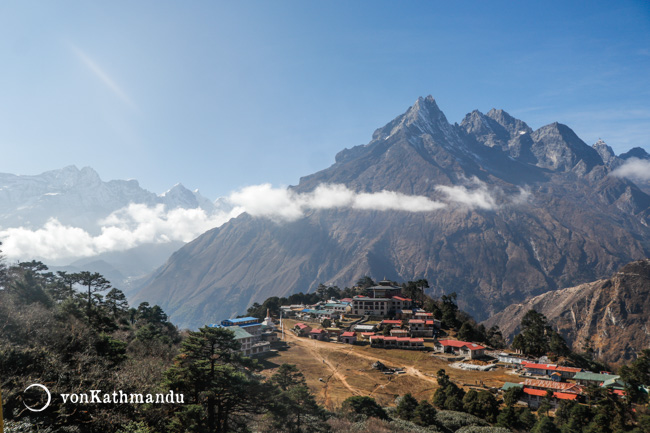
Tengboche village and monastery complemented by Kongde and Khumbila mountains
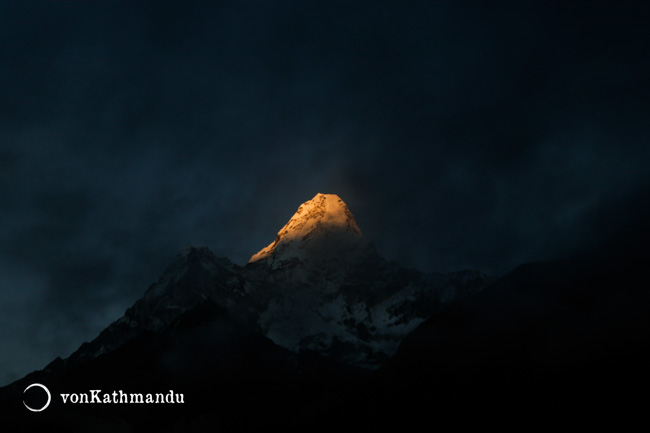
Last rays of the sun on Ama Dablam
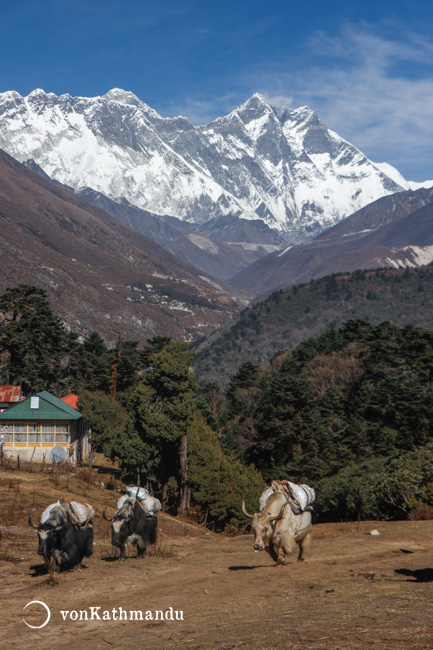
Yaks in Tengboche
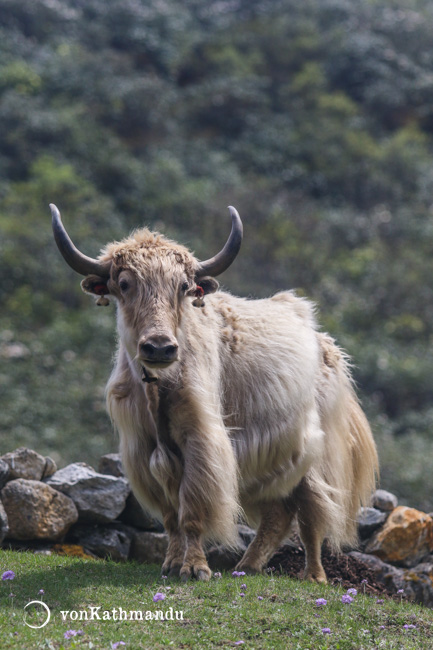
Yaks are commonly used for their wool, milk, meat and hide. Yak cake, dried yak dung, is used as fuel in the kitchen
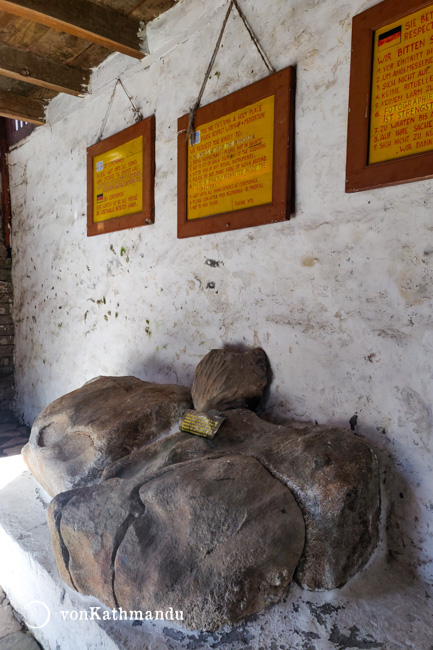
Tengboche Monastery has what is though to be a Yeti skull on display at its entrance
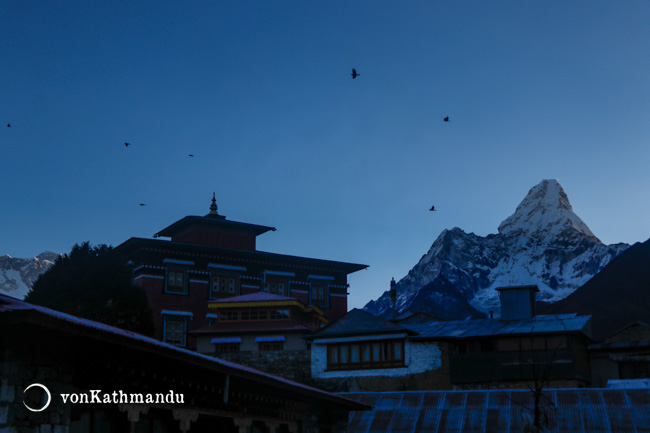
Birds in flight over Tengboche Monastery and Ama Dablam
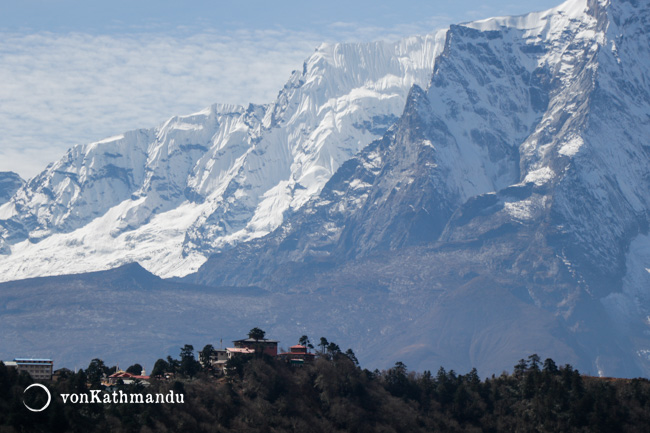
Giant Kongde towers over Tengboche Monastery
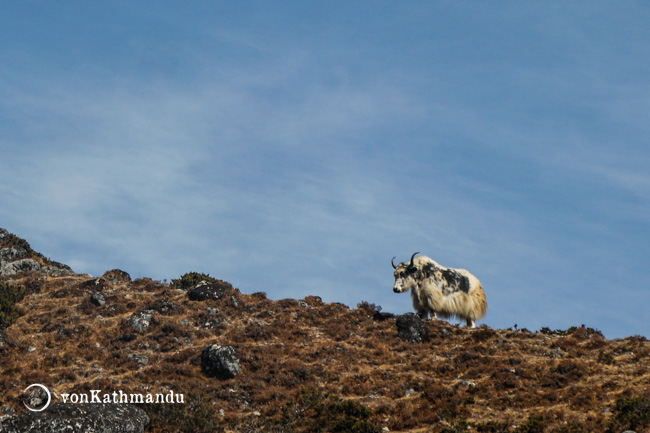
Yaks are a common sight along Everest trek
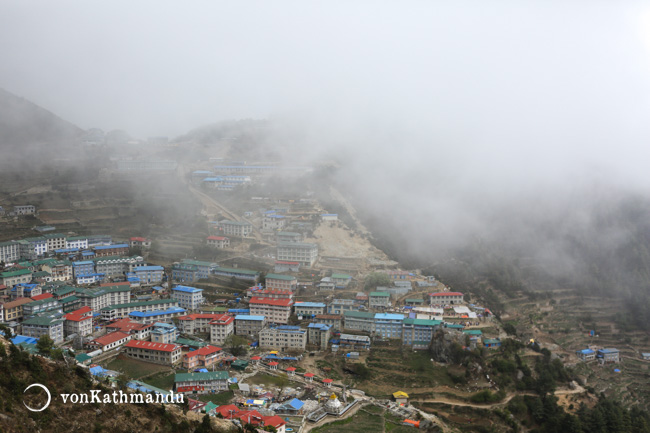
The ampitheatre of Namche Bazaar, often called the gateway to Everest
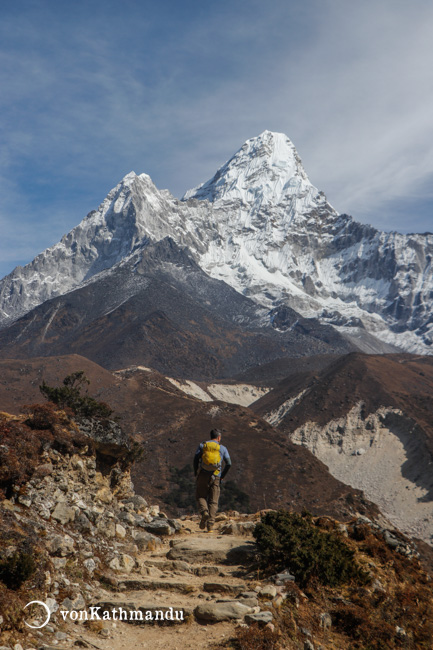
Strolling along the ridge in Pangboche
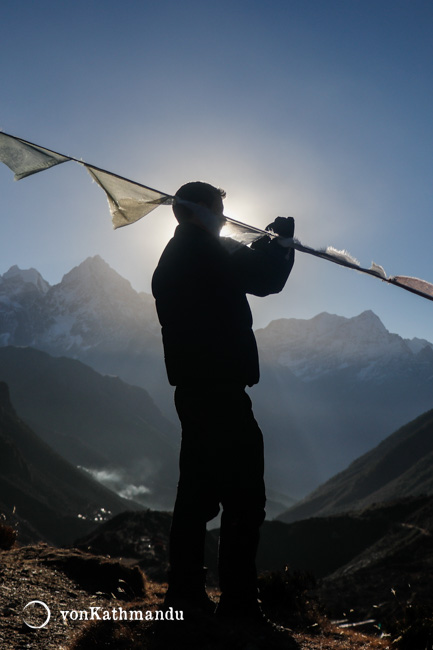
Mornings in mountains are a sight to behold
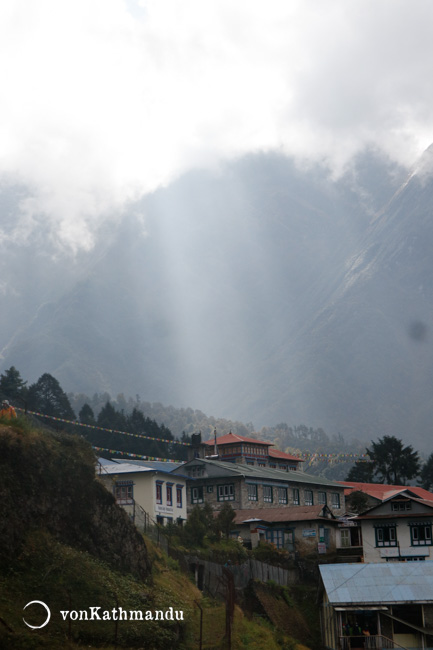
Hazy morning in Lukla
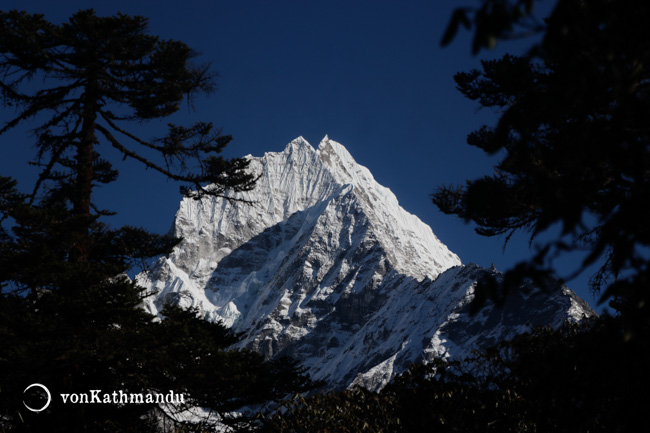
Thamsherku mountain seen through alpine vegetation of Khumjung
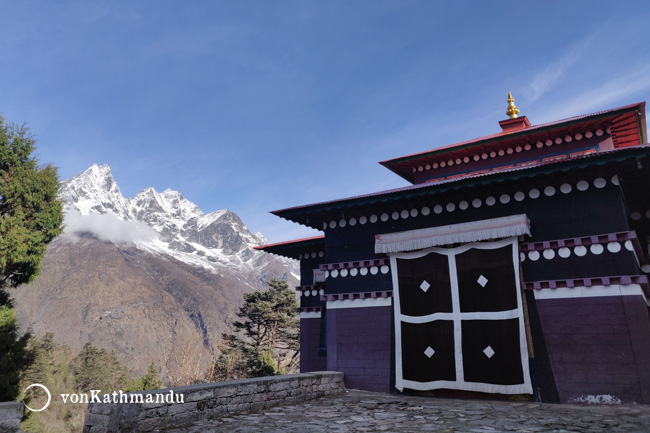
The holy Khumbila mountain and Tengboche Monastery
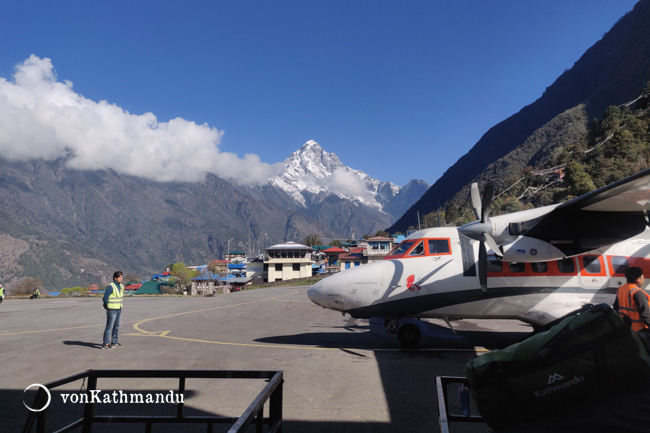
Perched on a hillside, Lukla Airpot is as thrilling as it is picturesque
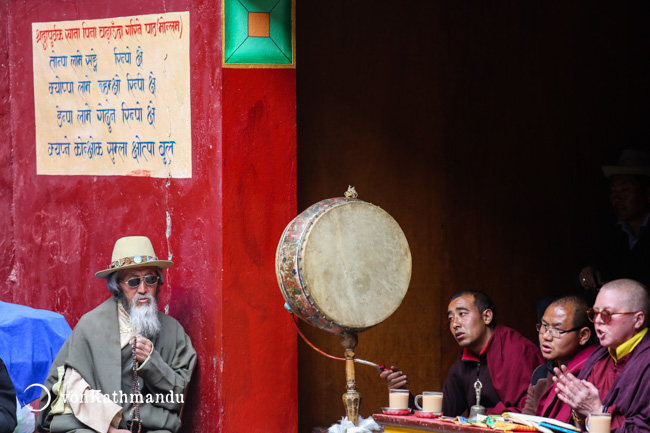
Buddhist monks at a festival in Namche
Itinerary
|
Day 1 |
Kathmandu - Manthali - Lukla - Monjo |
|
|
Day 2 |
Monjo - Namche |
|
|
Day 3 |
Namche - Khumjung |
|
|
Day 4 |
Khumjung - Tengboche |
|
|
Day 5 |
Tengboche - Namche |
|
|
Day 6 |
Namche - Lukla |
|
|
Day 7 |
Lukla - Manthali - Kathmandu |
|
|
Day 1 |
Kathmandu - Manthali - Lukla - Monjo |
|
|
Drive from Kathmandu to Manthali Airport 3.5 to 4.5 hrs An early morning drive from Kathmandu on winding roads takes us to Manthali, a tiny little town in Ramechhap district. Manthali Airport has been the gateway to Lukla since 2019. We start around 2 or 3 am in the morning following the Sunkoshi and Tamakoshi rivers, and reach Manthali right on time to catch the 6:30 or 7 am flight to Lukla. Note: All the flights to Lukla operate from Manthali Airport, Ramechhap during the months of March, April, May, October, November and December. |
|
|
Fly from Manthali to Lukla 20 mins A short, scenic and exhilarating mountain flight takes us from Manthali to Lukla, the gateway of Everest Region. |
|
|
Trek from Lukla to Monjo 5 to 6 hrs | 12 kms (7.5 mi) Highest point: Lukla at 2860m (9383ft) | Gain/drop: +604m/-638m (+1982ft/-2093ft) We meet the rest of our crew, arrange our baggages, have breakfast, and embark on a journey to Monjo, passing exciting suspension bridges and tiny village settlements following the Koshi river. |
Meals Included: Breakfast
Accommodation: Mountain Lodge
|
Day 2 |
Monjo - Namche |
|
|
Trek from Monjo to Namche 4 to 6 hrs | 6 kms (3.5 mi) Highest point: Namche at 3440m (11286ft) | Gain/drop: +976m/-354m (+3202ft/-1161ft) We walk northward along the banks of Koshi and reach the entry point of Sagarmatha National Park, from where the gruelling uphill awaits before we reach the amphitheater town of Namche, nestled perfectly atop a hill. Spend the rest of the day exploring monasteries, mountain museums, tiny cafes and coffee bars. |
|
|
Explore Namche Spend the rest of the day exploring monasteries, mountain museums, tiny cafes and coffee bars. |
Meals Included: Breakfast
Accommodation: Mountain Lodge
|
Day 3 |
Namche - Khumjung |
|
|
Trek from Namche to Khumjung (Acclimatization) 4 to 5 hrs | 7 kms (4.5 mi) Highest point: Syangboche at 3880m (12730ft) | Gain/drop: +490m/-127m (+1608ft/-417ft) We take it slow and easy to the peaceful and serene settlement of Khumjung today. We stop by Hotel Everest View for a stunning view of the Everest mountain chain on the way. The green-roofed valley of Khumjung and Khunde offers several options to explore, including a monastery housing a (supposed) yeti scalp and a school established by Edmund Hillary. |
Meals Included: Breakfast
Accommodation: Mountain Lodge
|
Day 4 |
Khumjung - Tengboche |
|
|
Trek from Khumjung to Tengboche 4 to 5 hrs | 6.5 kms (3.5 mi) Highest point: Tengboche at 3860m (12664ft) | Gain/drop: +732m/-662m (+2402ft/-2172ft) The walk on the first bit is a mix of minor uphills, downhills and flats with views of the picturesque Ama Dablam, followed by an arduous uphill to Tengboche. Don't miss out on the evening chants with monks in the largest, most impressive monastery in Khumbu. The aura of the town is magical, to say the least. The golden sunset over Everest and other Khumbu mountains will melt your heart away. |
Meals Included: Breakfast
Accommodation: Mountain Lodge
|
Day 5 |
Tengboche - Namche |
|
|
Trek from Tengboche to Namche 4 to 5 hrs | 8.5 kms (5 mi) Highest point: Tengboche at 3860m (12664ft) | Gain/drop: +444m/-869m (+1457ft/-2851ft) Watch a glorious sunrise over the mountains seen from Tengboche, with the crazy color of skies and burning red of morning rays touching the summits. We pack our bags and retrace our steps back to Namche. |
Meals Included: Breakfast
Accommodation: Mountain Lodge
|
Day 6 |
Namche - Lukla |
|
|
Trek from Namche to Lukla 6 to 7 hrs | 18 kms (11 mi) Highest point: Namche at 3440m (11286ft) | Gain/drop: +932m/-1560m (+3058ft/-5118ft) The final trekking day is also a long one. We leave Namche and take the same route back to Lukla. The team will gather to share laughs and maybe raise a glass or two before flying out of Lukla the next morning. We thank porters and assistant guide, and bid them farewell. |
Meals Included: Breakfast
Accommodation: Mountain Lodge
|
Day 7 |
Lukla - Manthali - Kathmandu |
|
|
Fly from Lukla to Manthali airport 20 mins An early breakfast and we fly out of Khumbu with glimpses of the mountains we saw from the trails. |
|
|
Drive from Manthali to Kathmandu 5 to 6 hrs With memories to cherish a lifetime, we hop on our car and drive back to Kathmandu on the same roads we took the first day. |
Meals Included: Breakfast
Mountain Lodge |
X Close Accommodation Popup
X Close Popup
Nepal
Mountain lodges are the basic accommodation set up by locals to cater to trekkers in the trails. The common features across all lodges are standard rooms, a spacious and heated dining hall, and a restaurant with a menu. The rooms in mountain lodges generally have two or three twin beds with a mattress and blanket. If you are used to sleeping warm, we highly recommend bringing your own sleeping bag and liner. Other amenities could be a table, hanger, and dustbin but do not expect to have charging ports and attached toilets in the rooms. Moreover, it is mandatory to have meals in the facility you’re staying at.
Room Amenities
| • | Shared Toilet |
Property Amenities
| • | Restaurant and Bar | • | Outdoor Seating | • | Mountain Views |
Mountain Lodge |
X Close Accommodation Popup
X Close Popup
Nepal
Mountain lodges are the basic accommodation set up by locals to cater to trekkers in the trails. The common features across all lodges are standard rooms, a spacious and heated dining hall, and a restaurant with a menu. The rooms in mountain lodges generally have two or three twin beds with a mattress and blanket. If you are used to sleeping warm, we highly recommend bringing your own sleeping bag and liner. Other amenities could be a table, hanger, and dustbin but do not expect to have charging ports and attached toilets in the rooms. Moreover, it is mandatory to have meals in the facility you’re staying at.
Room Amenities
| • | Shared Toilet |
Property Amenities
| • | Restaurant and Bar | • | Outdoor Seating | • | Mountain Views |
Mountain Lodge |
X Close Accommodation Popup
X Close Popup
Nepal
Mountain lodges are the basic accommodation set up by locals to cater to trekkers in the trails. The common features across all lodges are standard rooms, a spacious and heated dining hall, and a restaurant with a menu. The rooms in mountain lodges generally have two or three twin beds with a mattress and blanket. If you are used to sleeping warm, we highly recommend bringing your own sleeping bag and liner. Other amenities could be a table, hanger, and dustbin but do not expect to have charging ports and attached toilets in the rooms. Moreover, it is mandatory to have meals in the facility you’re staying at.
Room Amenities
| • | Shared Toilet |
Property Amenities
| • | Restaurant and Bar | • | Outdoor Seating | • | Mountain Views |
Mountain Lodge |
X Close Accommodation Popup
X Close Popup
Nepal
Mountain lodges are the basic accommodation set up by locals to cater to trekkers in the trails. The common features across all lodges are standard rooms, a spacious and heated dining hall, and a restaurant with a menu. The rooms in mountain lodges generally have two or three twin beds with a mattress and blanket. If you are used to sleeping warm, we highly recommend bringing your own sleeping bag and liner. Other amenities could be a table, hanger, and dustbin but do not expect to have charging ports and attached toilets in the rooms. Moreover, it is mandatory to have meals in the facility you’re staying at.
Room Amenities
| • | Shared Toilet |
Property Amenities
| • | Restaurant and Bar | • | Outdoor Seating | • | Mountain Views |
Mountain Lodge |
X Close Accommodation Popup
X Close Popup
Nepal
Mountain lodges are the basic accommodation set up by locals to cater to trekkers in the trails. The common features across all lodges are standard rooms, a spacious and heated dining hall, and a restaurant with a menu. The rooms in mountain lodges generally have two or three twin beds with a mattress and blanket. If you are used to sleeping warm, we highly recommend bringing your own sleeping bag and liner. Other amenities could be a table, hanger, and dustbin but do not expect to have charging ports and attached toilets in the rooms. Moreover, it is mandatory to have meals in the facility you’re staying at.
Room Amenities
| • | Shared Toilet |
Property Amenities
| • | Restaurant and Bar | • | Outdoor Seating | • | Mountain Views |
Mountain Lodge |
X Close Accommodation Popup
X Close Popup
Nepal
Mountain lodges are the basic accommodation set up by locals to cater to trekkers in the trails. The common features across all lodges are standard rooms, a spacious and heated dining hall, and a restaurant with a menu. The rooms in mountain lodges generally have two or three twin beds with a mattress and blanket. If you are used to sleeping warm, we highly recommend bringing your own sleeping bag and liner. Other amenities could be a table, hanger, and dustbin but do not expect to have charging ports and attached toilets in the rooms. Moreover, it is mandatory to have meals in the facility you’re staying at.
Room Amenities
| • | Shared Toilet |
Property Amenities
| • | Restaurant and Bar | • | Outdoor Seating | • | Mountain Views |
Customize this trip
Take a heli back.
For those short on time or looking to add an exhilarating experience of flying over the majestic Himalayas, you have the option to charter a private helicopter on the way down. Inquire for prices and options!
Kathmandu Hotel and Transfers
-
If you’d like us to organize airport transfers and arrange your stay in Kathmandu or any other cities, let us know. We’re happy to give you options based on your preference, and book them for you.
Here’s one of our popular 2 days add-on: USD 185 per person:
- Airport pick up and drop off, facilitated by an English-speaking representative
- 2 nights in a four-star hotel in Kathmandu (Hotel Shankar or similar) on bed & breakfast plan and twin-sharing basis
